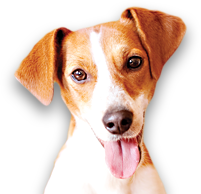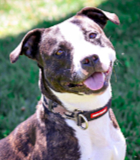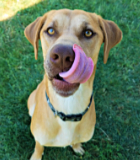OBJECT GUARDING
- This topic has 0 replies, 1 voice, and was last updated 16 years, 4 months ago by
Mackenzie’s Admin.
-
AuthorPosts
-
January 23, 2009 at 2:18 am #320
Mackenzie’s Admin
MemberWhile out walking Bosco the beagle, you scan the sidewalks and streets with skills honed from years of living with an expert garbage monger. As you pass the local butcher shop, the man at the counter offers you some beef marrow bones, but you decline.
You’re almost home free when a tennis ball bounces across your path. In one fell swoop, Bosco seizes it in his mighty jaws and growls, "Mine!"Food guarding, a form of canine possession aggression (CPA), was covered in the previous column "Mine!" In this one we discuss object guarding, the act of aggressively protecting toys, chewies (especially rawhide and beef marrow bones), and stolen objects such as shoes, underwear, and human garbage.
Why does a dog feel the need to protect an item from his family members? Because he thinks they are going to take it away! They’ve done it before, haven’t they? As a puppy, Bosco roamed the house investigating his environment by picking up everything he could with his mouth. If they caught him in the act, they bellowed "No!" and removed the prize from Bosco’s clutches. Every time he found a treasure, it was snatched away. Before long Bosco upped the ante with a growl, then a snarl, and soon progressed to a full-fledged bite.
Down in the Mouth
Your dog should be used to having his mouth touched, so that when you wish to remove something from it, you won’t get bitten. Start from puppyhood on—brush his teeth, play with his flews, open his mouth, and inquire, "Anybody in there?" Reward the acceptance of mouth handling with a tasty treat or some play.For dogs who have specific problems with items such as rawhide, purchase a foot-long retriever stick. Hold on to one end while the dog chews the other. Bosco may not enjoy this as much as hiding under a table with it, but in time he will get used to your presence and relax.
The Big Switcheroo
It is important for the dog to view his handler as the provider of all good things. You can accomplish this by tightly controlling his environment. Keep all but a few chew toys off the floor and take others out only when you wish to play. Make sure you offer the playtime-only item with a command such as "take it." When you tire of the game (you, that is, not the dog), tell him to "drop it." Give him another item in exchange, then pick up the first object and put it away.To make a sweeter deal for Bosco, give him a "better" item in exchange for dropping the first. Find out what those better items are by composing a hierarchy of things your dog enjoys; include food, toys, treats, and activities. If tennis-ball retrieving, for instance, is third on your dog’s list, reward him with liver (number two) for dropping the tennis ball. If he indulges in a bit of garbage from the street, command him to drop it and trade up to his tennis ball.
In theory, human pack leaders should be able to take whatever they want from their dogs. But not all dogs play by these rules. In some households, dogs believe they rule the roost. In others, the dogs’ motives are unclear. Their actions may be based on fear or prompted by earlier experience. Try to determine the triggers and avoid those situations so the dog doesn’t gain confidence by successfully practicing the unwelcome behavior. Get professional help before Bosco sends a loved one to the hospital. A certified dog trainer or applied animal behaviorist can carefully assess the situation and design a protocol tailor-made for you and your dog.
By Jacque Lynn Schultz, CPDT
Companion Animal Programs Advisor
ASPCA National Shelter Outreach -
AuthorPosts
- You must be logged in to reply to this topic.












































